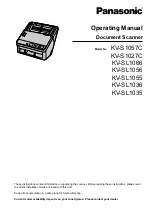
Section 6
Troubleshooting
6.1 Factors Affecting Image Quality
Fluorescent samples
Resolution
Any movement of the sample during scanning can cause a blurred image. Be sure that
excess liquid around gel samples is removed and that the imager is level. Sample holders
are supplied with the glass sample tray. These have suction feet that allow attachment to
the glass and will hold samples in place.
Sample height will affect the resolution of the image. The optics of the scanner are
designed to allow for some variation in sample thickness but samples greater than 3 mm
thickness or on a substrate such as glass or plastic plates are optimally imaged using the
optional Multi Sample Tray II. This tray comes with variety of spacers that allow the sample
to be positioned at the optimal imaging height. See the Multi Sample Tray instructions for
further details.
Sensitivity
Fluorescent intensity can vary greatly between samples and require changing the PMT
voltage. Three standard PMT settings exist for all fluorescent applications, High, Medium,
and Low Sample Intensity. These represent PMT voltages of 25, 35, and 45% of maximum
respectively. The higher the PMT voltage, the greater the signal amplification. Therefore,
with a sample that has a strong fluorescent signal, the PMT voltage should be lower than
for a sample with a weak fluorescent signal. Empirical testing of the proper PMT setting is
required to obtain the best quality image. If the preset PMT voltages are not satisfactory, a
custom application can be made using a voltage other than what is available through the
preset applications. Consult your software manual for details of creating a custom
application.
Placing samples on substrates other than the provided sample trays can produce excessive
background fluorescence. High background fluorescence will negatively impact sensitivity.
Testing any other substrates with the same imager settings intended to be used for sample
scanning will identify potential problems.
Radioactive samples
Resolution
Close contact of the sample with the active surface of the imaging screen is critical for
producing the highest quality image. Remove excess layers of tape, air bubbles or wrinkles;
these may produce only a very small gap, but this is sufficient to produce a fuzzy image.
Samples that are over-exposed will result in images with low resolution. If this occurs,
erase the screen and expose for a shorter time.
High background on a screen can cause decreased resolution of weak signals. Ensure that
the screen is thoroughly erased before imaging your sample.
The phosphor screen is very sensitive to isotope emission, as such, place the screen evenly
over the sample and do not move once it has been aligned, as this may result in a ghost or
double image.
33







































